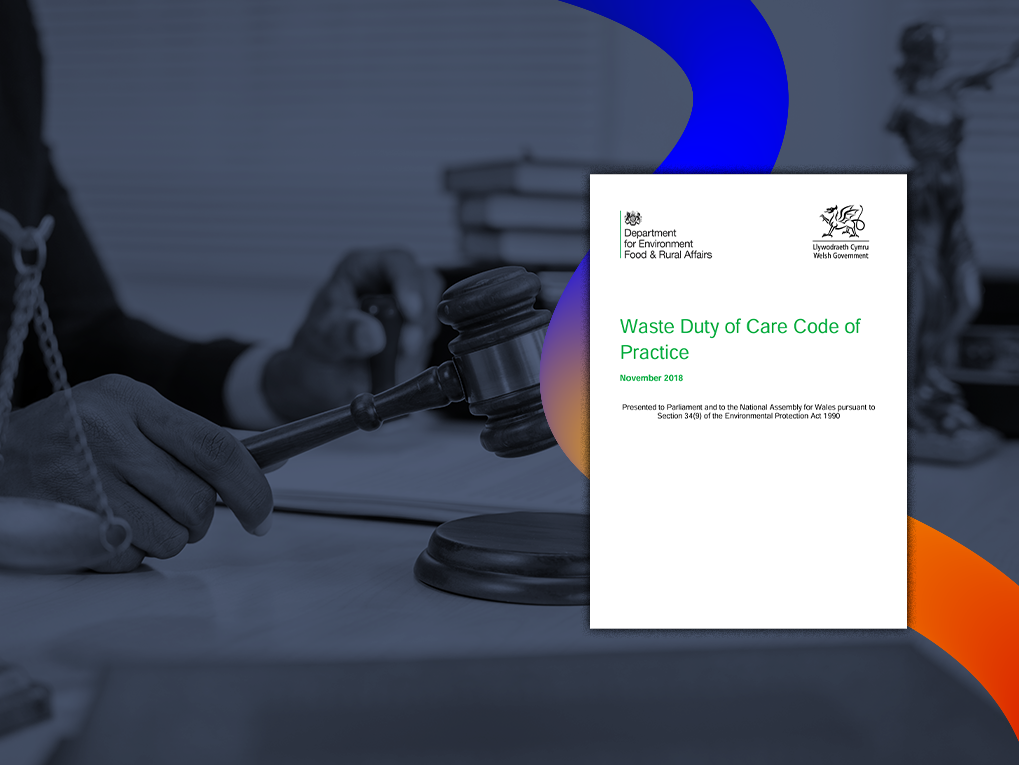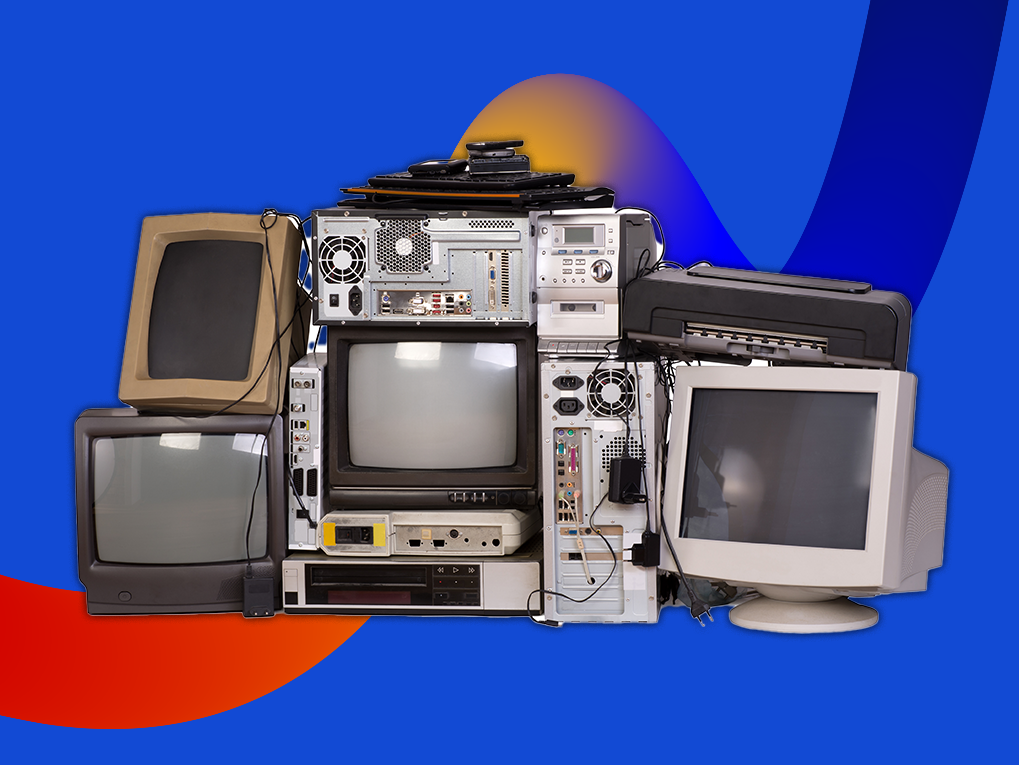Join us as we dig into everything pharmaceutical waste, from hands-free egg yolk extraction to how many UK rivers contain fish with drug dependencies – and everything in between.
If you’re a pharmaceutical manufacturer, chances are you’re already familiar with this waste type, but does everyone on your team share the same knowledge? Does your waste service provider also understand the complexities?
- What Is Pharmaceutical Waste?
- A Note to Pharmaceutical Manufacturers
- Key Types of Pharmaceutical Waste in Manufacturing
- Is Pharmaceutical Waste Always Hazardous?
- How Can Hazport’s Mobile Chemists Best Serve You?
- What Are the Legal Regulations for Pharmaceutical Waste?
- A Study on the Environmental Impact of Pharmaceutical Waste
- The Role of a Licensed Pharmaceutical Waste Management Partner
- Hazport: Your Partner in Safe, Secure and Compliant Pharmaceutical Waste Management
What Is Pharmaceutical Waste?

Pharmaceutical waste refers to any discarded material that originates from the production, handling or testing of pharmaceutical products. For manufacturers, this can include everything from expired raw materials and off-spec batches to residues, contaminated equipment and PPE, as well as process wash water.
If your business is involved in the production, packaging or testing of any pharmaceutical products, then you’re certain to be creating pharmaceutical waste.
A Note to Pharmaceutical Manufacturers
We’re not here to teach your grandmothers how to suck eggs – we know that if you’re manufacturing pharmaceuticals, you’re already well-versed in the materials you’re handling and their inherent hazards. You’re working with tightly controlled substances, you most likely have robust quality systems and understand the importance of classification, segregation and compliance.
But even in the most experienced teams, mistakes can happen – especially when it comes to waste. After all, how often do you think about an item after you’ve binned it?
Mislabelled containers, cross-contaminated waste streams and missed regulatory changes are challenges we see a lot of UK pharmaceutical manufacturers facing, and even if your team makes zero mistakes, you also need a pharmaceutical waste service provider who understands pharmaceuticals as well as you do – someone who speaks your language and knows what’s at stake.
Key Types of Pharmaceutical Waste in Manufacturing
Some of the most common types of waste produced in pharmaceutical manufacturing facilities include:
#1 Production Waste
- Off-spec or contaminated batches
- Residual powders or liquids from mixing tanks
- Expired pharmaceuticals or ingredients
- Leftover raw materials and active pharmaceutical ingredients (APIs)
#2 Solvent and Chemical Waste
- Used solvents such as ethanol, methanol and acetone
- Cleaning fluids and reagents
- PH-adjusting chemicals such as hydrochloric acid, acetic acid and sodium hydroxide
- Alcohol based hand gels
#3 Contaminated Materials
- Packaging or items that have been in contact with pharmaceuticals
- PPE such as gloves, aprons and goggles
- Cleaning cloths or wipes
- Filters and swabs
- Used glass vials or syringes
#4 Cytotoxic and Cytostatic Waste
- Associated with chemotherapy or hormone-based drug manufacturing
#5 Laboratory Waste
- Analytical test samples
- Expired reference standards
- Calibration residues and assay chemicals
And to think, this list is non-exhaustive! Each waste type may need a different approach to storage, handling and disposal, depending on its classification.
Is Pharmaceutical Waste Always Hazardous?
No, not all pharmaceutical waste is hazardous. When you consider the definition of hazardous waste – if it or the material or substances it contains are harmful to humans or the environment – it makes it easier to separate hazardous pharmaceutical waste from non-hazardous:
- Hazardous Pharmaceutical Waste includes materials that are toxic, flammable, corrosive, or reactive. Examples include cytotoxic/cytostatic drugs, certain antibiotics, lab chemicals and controlled substances.
- Non-Hazardous Pharmaceutical Waste includes materials that don’t meet the criteria for hazardous waste but still require proper disposal. Examples include over-the-counter medications and some prescription drugs.
To be sure what’s hazardous and what isn’t, professional classification is essential. This is where Hazport’s Mobile Chemists can prove helpful.
How Can Hazport’s Mobile Chemists Best Serve You?
Our Mobile Chemists aren’t just experts in hazardous waste; they also bring a deep familiarity with pharmaceutical processes, regulatory requirements, and site-level practicalities. They also turn up in pretty cool Hazport-branded vehicles, but that’s going off-topic…
Here’s how our mobile chemists support pharmaceutical manufacturers:

- Identification: We assess your waste on-site using safety data sheets, production data and visual inspection to identify its composition and risk profile.
- Classification: We assign the correct EWC codes and hazard properties based on UK regulations.
- Labelling: We provide compliant labelling that clearly displays the waste type, hazard symbols and relevant regulatory references.
- Packing: We ensure waste is safely and securely packed in UN-approved containers for safe storage and transport.
Our mobile chemists are also available to train your team, conduct waste audits and support the implementation of internal waste segregation systems – removing the guesswork from pharmaceutical waste management.
Get in touch if you need support with classifying your pharmaceutical waste.
What Are the Legal Regulations for Pharmaceutical Waste?
Pharmaceutical waste management in the UK is governed by several vital regulations, which are crucial to understand to maintain compliance:
- The Environmental Protection Act 1990 provides the framework for waste management in the UK.
- The Hazardous Waste Regulations 2005 define hazardous waste and set out the requirements for its proper management.
- The Controlled Drugs (Supervision of Management and Use) Regulations 2013 provide specific guidance on the management of controlled substances.
- The Waste (England and Wales) Regulations 2011 implement the revised EU Waste Framework Directive.
Visit our compliance page for information on other hazardous waste regulations, or for fun, if it’s the kind of thing you enjoy.
A Study on the Environmental Impact of Pharmaceutical Waste
 Alarming levels of pharmaceutical pollution were revealed by a 2024 study by the University of York and the Rivers Trust, which found pharmaceutical pollution in 52 out of 54 river sites across all 10 of England’s national parks.
Alarming levels of pharmaceutical pollution were revealed by a 2024 study by the University of York and the Rivers Trust, which found pharmaceutical pollution in 52 out of 54 river sites across all 10 of England’s national parks.
This pollution poses a serious threat to ecosystems – not only bad news for a significant number of fish that may end up hooked (pun intended), but also harming the lesser thought about organisms like invertebrates and algae.
Due to their low flow and outdated treatment facilities, rural river systems tend to be more vulnerable as the dilution of contaminants becomes difficult. For pharmaceutical manufacturers, this highlights the crucial importance of responsible waste management practices – not only for compliance, but also for safeguarding environmental and public health.
The Role of a Licensed Pharmaceutical Waste Management Partner
Outsourcing your pharmaceutical waste management to a specialist like Hazport doesn’t just simplify compliance – it protects your business through:
- Fully traceable waste, from collection to final disposal.
- Waste documentation and consignment note management.
- Access to a team of experts who know pharmaceutical waste inside out.
- Emergency response and spill containment if needed.
- Advice on waste minimisation and segregation.
Hazport: Your Partner in Safe, Secure and Compliant Pharmaceutical Waste Management
 At Hazport, we understand the complexities of pharmaceutical waste disposal, and we’re committed to providing safe and compliant disposal solutions.
At Hazport, we understand the complexities of pharmaceutical waste disposal, and we’re committed to providing safe and compliant disposal solutions.
Don’t leave your safety and compliance to chance. Partner with Hazport to ensure your waste is handled the right way. Our experienced team is ready to support you every step of the way, from identifying and segregating waste to final disposal.
Contact us today to learn more about our pharmaceutical waste disposal services and how we can help you create a safer and more compliant waste management system for your facility.





